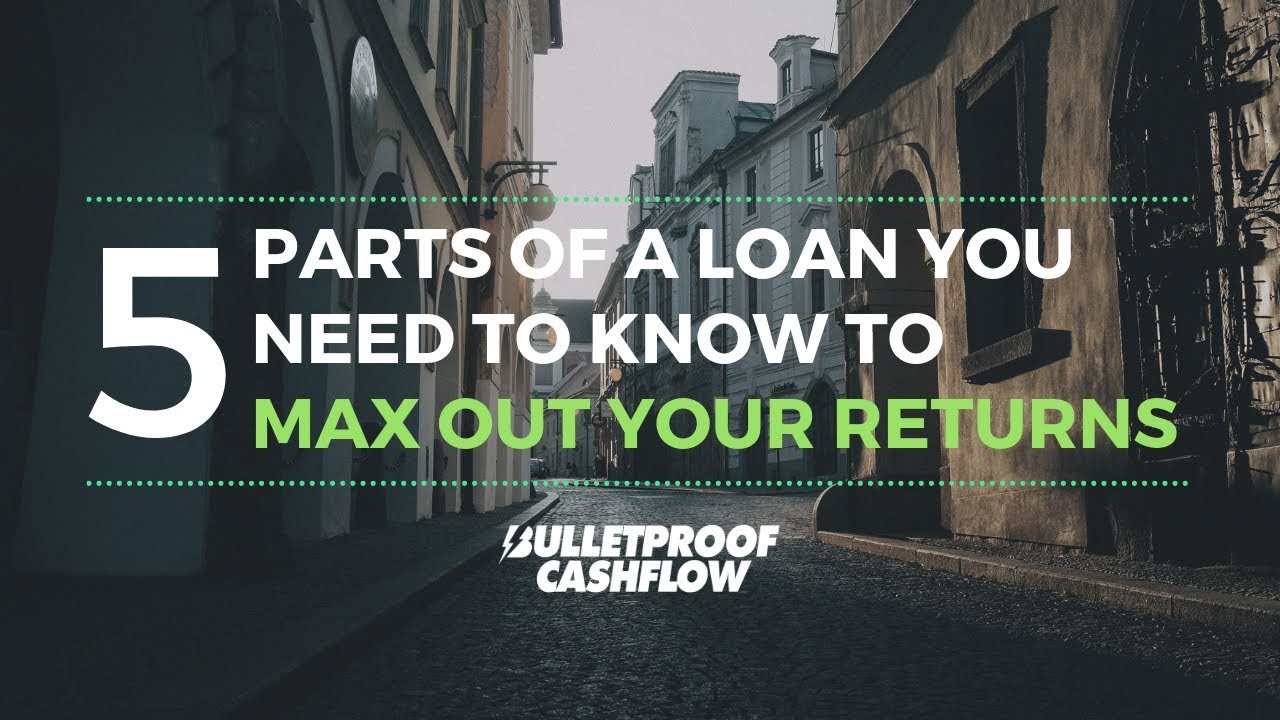Premium Only Content

5 Parts of a Loan you Need to Know to Max Out Your Returns
In the world of multifamily real estate, people starting out focus on locating a deal or even raising money. These things are important, but one important item is often overlooked: the financing.
The wrong financing can kill a deal – or it can make it. To me, it is just as important as raising the equity to get the deal closed.
Commercial loans are very different from residential loans, that are for four units or less. Unlike residential loans, commercial loans have many different programs and options. On the residential side, you are looking at rate and term. While both are important, these are the two most familiar with people not active in the real estate space. However, when you are dealing with a specifically a commercial multi-million-dollar loan, there are many ways financing a deal that will impact cashflow.
Understanding the different parts of a loan program and how they can affect your returns is important. So, here are my 5 parts you need to know to maximize your returns.
1) Interest Rate: The Interest Rate is the amount charged by the lender, expressed as a percentage of principal, to the borrower. Interest rates are typically charged on an annual basis.
2) Loan-to-Value: The Loan-to-Value ratio (LTV) is the amount of the loan compared to the value of the property. This ratio is calculated by the lender prior to providing the loan. If the property is valued at $1,000,000, and the bank will give you $750,000, you have an LTV of 75%. This percentage will be dependent on the strength of the property and the strength of the borrower. Typically, banks will have an LTV of between 65% & 80%.
These two, the interest rate and loan-to-value, are the parts most people focus on. It gives you an idea of what the cost of borrowing the money will be, how much they will lend to you and how much you will need to bring to the table. However, the other parts are also important, so let's continue.
3) Terms: The Terms of a loan can sometimes be flexible depending on the loan product. The term is the period until the loan becomes due and payable. A typical loan will have a 5-year term and a 25-year amortization. Your payment will contain a portion of principal plus interest over the 5 years and the payment amount would be on a 25-year schedule. Longer amortization periods typically mean smaller monthly payments.
The loan terms you will want is dependent on your business plan. If you plan on a holding a deal long-term, it will make sense to get a low rate with a 25 or even a 30-year amortization. If your business plan calls for you to add value to a property and refinance after a short period of time, a 24-month, interest-only bridge loan may be the best option for you. After you add value, you can refinance to get into some long-term debt.
3) Nonrecourse or Recourse: When it comes to residential loans, banks want someone they can go after if the loan is not paid. They want that person buying the home to personally guarantee some or all or the loan. When it comes to commercial loans, it is different. Depending on the terms of the deal, you may either have a nonrecourse or a recourse loan. If you have a nonrecourse loan and the deal goes bad, the most the lender could do is come after the property, so you would lose all your equity. Additionally, you are personally protected if you didn’t neglect the property or commit fraud against the lender.
There are many options for multifamily buyers that do not have recourse. If you keep the LTV between 65% to 75% and the loan is large enough, you can stay nonrecourse.
In either case, if your deal does go bad, the chances of you getting another loan and raising the capital needed to take the deal down are drastically reduced. It is important that you make solid, good deals and work deals that make sense. Don’t overpay for deals because you think the financing is cheap and the money is available.
5) Prepayment Penalty: As the name implies, if you want to pay the loan off before the set term, usually the case if you want to refi, the lender will charge you a fee. This is typically a step-down percentage depending on the term, but it can vary. For example, if you have a three-year term, you would be charged 3% in Year 1, 2% in Year 2 and 1% in Year 3. Again, if your plan is to reposition the property after 24 months and you are getting a 3-year term, having a prepayment penalty is probably not a good idea. If you tell the lender upfront of the business plan, they should be able to come up with a solution.
-
 5:04
5:04
Brian J. Pombo Live
4 years agoWhat Do Your Customers Need To Know?
160 -
 7:05
7:05
samaranatha
4 years ago $0.03 earnedYou need to know this about the V
2612 -
 17:58
17:58
myjewelrybench
4 years ago $0.01 earnedBuild your Own Watch from parts you can buy Online!
606 -
 3:36
3:36
KNXV
4 years agoCOVID-19 vaccine: What you need to know
484 -
 3:19
3:19
WKBW
4 years agoAnswering your questions: Everything you need to know about filing taxes in 2021
75 -
 27:04
27:04
MountainMonstersofficial
4 years agoKnow Your History- Warzone
96 -
 0:44
0:44
TRISTOM307
4 years agoKnow your Limits
34 -
 0:35
0:35
KGTV
4 years agoYou Decide: Deadlines You Need To Know
48 -
 3:19
3:19
KMGH
4 years agoElection Night: What you need to know
7801 -
 0:24
0:24
bamauthor
4 years agoWHY YOU NEED TO KNOW HISTORY
79